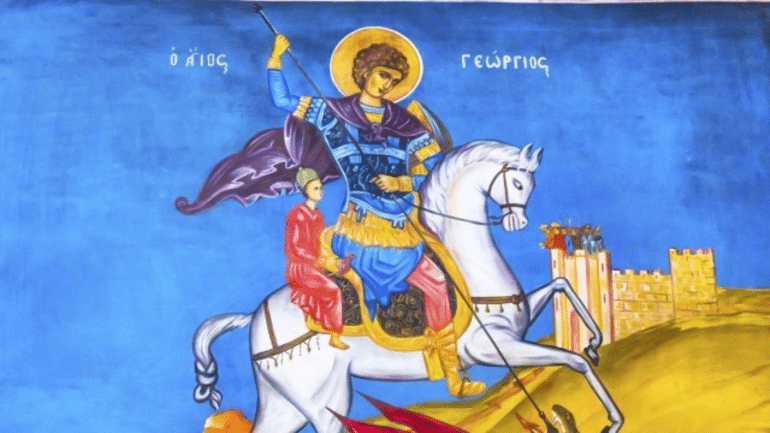Saint George's Day is one of the biggest mobile holidays and is usually celebrated on April 23rd. However, because it is a movable holiday, it is affected by when Easter falls. More specifically when April 23rd falls before Easter then the celebration of Saint George is moved to the second day of Easter. If not, then it is normally celebrated on April 23rd.
So this year, George and Georgia will celebrate together with Thomas and Thomas, since St. George on April 23, 2023, is Thomas' Sunday. According to Orthodox tradition, although the calendar includes more than 50 figures with the name "George", the saint that is officially celebrated is Saint George the Great Martyr and Trophy Bearer.
Saint George was a Greek soldier in the Roman army. He came from Cappadocia and served as an army officer under Emperor Diocletian. He was sentenced to death because he did not renounce his Christian faith. Later, he was canonized as a Christian martyr.
Called the Great Martyr and Trophy Bearer by the Orthodox Church, he is one of the most popular saints in the entire Christian world. His memory is commemorated on April 23 for the Churches that follow the Julian calendar, where if this day falls before the Resurrection, it is moved to Epiphany Monday. Saint George is considered a Saint of the Orthodox, Catholic, Anglican, Lutheran and Armenian Churches.
Saint George, as in Byzantium, became the patron and Trophy-bearing saint of the Greek Army, after the liberation of the Greek Nation. Thus, in the image of the dragon they saw the Turkish conqueror, who is killed by the Saint. This depiction of him appears in iconography from the 12th century onwards.
In 303 AD, when the persecutions of Diocletian began, George did not hesitate to confess his Christian faith, infuriating Diocletian, because he held a great office and was his favorite. He initially offered him riches, land and slaves to convert and when George refused, taking pity on the pagans, he subjected him to a series of horrific tortures. First they tied the saint to a tree and beat him in the stomach with a pole. Christian tradition describes that after they stabbed him, they tore his flesh with a special wheel of knives. He was then thrown into a pit of slaked lime and then forced to walk in hot metal shoes. According to Christian tradition, out of all these trials, God miraculously kept him alive.
George was finally martyred by beheading, on Friday, April 23 of the year 303 AD. According to the calculation of the Christian historian and apologist Saint Eusebius, this day corresponded to the Friday of the Transcendent Easter. The Christians took his remains and buried them with those of his mother, who was martyred on the same or the following day. According to Christian tradition, George's faithful servant, Pasikrates, fulfilling his wish, took the remains of George, together with that of his mother, and transported them to Lydda in Palestine. Constantine the Great built a temple over his tomb. From there the Crusaders took them to the West.
Source: protothema.gr
